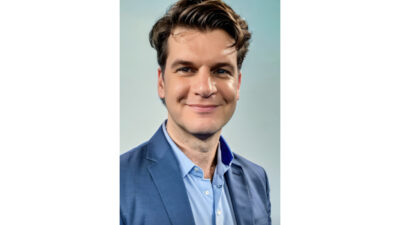Author King is a registered patent agent and an electrical engineer. He says protecting your inventions is much easier than most engineers think. It’s mostly a matter of keeping comprehensive records—the kind you should keep anyway so that other engineers won’t have to repeat or duplicate your research. For those who loath writing, use a streamlined disclosure form. [Do your practices today differ for protecting patents? Add a comment.]

Happy 60th, Control Engineering! Our magazine first published in September 1954. This monthly column in 2014 will resurrect some of our favorite material from the 1954 and 1955 issues. Technologies have progressed, but they continue to pave the way for today’s innovations. Here is a full-length article penned in 1955 by Leonard H. King. An engineer’s notebook can be the stoutest bulwark in his patent protection procedure. But to serve this purpose it must be based on a realistic concept of patent law.
During a recent investigation of a patent situation, I asked an engineer about his record-keeping practice. "I record all the important data," he replied. This statement is a danger flag. How can a man know in advance what is to become important?
Consider an engineer working on one phase of a coordinated research problem. He is likely to record only what is directly related to his aspect of the program. And he may not bother with a mass of collateral data that may, however, be vitally important to the problem as a whole. As a result, he dissipates part of his knowledge, and he may also prejudice the project’s patent rights.
Don’t bother writing letters to yourself
Most laymen will glibly tell you that the best way to protect your invention is to send yourself, by Registered Mail, a sealed envelope containing the written description of the invention. Most authorities deny that such a record has practical value.
Actually, the best protection comes from conventional engineering records, including notebooks, engineering drawings, purchase orders, and project progress reports. An understanding of the procedures within the Patent Office, where it is assigned to an examiner. He starts with what is termed a "novelty search." Here is the first stumbling point. The most frequent cause of rejection is that the examiner uncovers prior art, which may be in the form of a publication or a previously issued patent.
The statute provides that a valid patent may not be granted for an invention that has been disclosed in a printed publication more than a year prior to the filing date of the application. Publication includes other patents issued within the previous year.
This brings up an interesting and somewhat unusual situation. One inventor may claim an invention that another inventor disclosed in a patent but failed to claim. Suppose, for example, a computer manufacturer gets a patent by describing a whole computer and claiming on the general system. And suppose that he fails to claim a new magnetic drum memory used in his computer. You, let us say, have been perfecting this same memory drum for five years. Now, you can file an application for a patent on the drum. You must, however, file within a year of the issuance of his patent. And then you must prove that you had the drum working before he applied for his patent. Here again your engineering records can substantiate your proof.
Records are vital when two applications collide
The situation would be entirely different if the computer manufacturer had claimed-as well as disclosed-the new magnetic drum. The Commissioner of Patents cannot issue two valid patents for the same invention. So, if you filed your application within a year after the computer patent was issued, he must base his decision a procedure known as "interference." This is one of the most technical of all legal procedures. If you win the interference, you will get a patent, and the courts will hold the other fellow’s patent invalid.
After his novelty search, the patent examiner looks for possible interference by giving over other pending patents. If he finds an interference, it is up to the junior applicant (the latest to file) to prove the priority of his invention. Ordinarily, he has no chance unless his work predated filing by the senior applicant. Once an interference is established, as it often is when two people have the same idea at roughly the same time, both parties file sworn preliminary statements. A typical one attests to the date of the first drawing, the date of the first written description, the date of the first disclosure to others, the date of the first reduction to practice, and the date when the applicant began to reduce his invention to practice. Backed by proper records, the inventor should not have trouble helping his attorney prepare a satisfactory preliminary statement.
The first disclosure to others is intended to mean a disclosure to a technically competent person. If the inventor states that he went home and told his wife: "I invented a new wide-band analog function multiplier today," and proceeds to describe it while she’s setting the table, this will not be later considered as a "disclosure to others," unless she happens to be a qualified electrical engineer.
An inventor’s own statement that he conceived his idea on or before a certain date is held to be self-serving and not admissible as evidence. He must have a witness-not a co-inventor, whose statement would be equally self-serving. A supervisor, if he has one, would make an ideal witness.
Corroborating actual reduction practice is not so simple as corroborating conception of an invention. Take the case of the gadgeteer who showed a potato peeler to friends in his living room. Its purpose was obvious, but because he failed to peel any potatoes for his guests, this was held not to be a reduction to practice. Take an example more pertinent to control engineering-a new stable oscillator. It’s not enough to prove that the oscillator was operating without any load other than the oscilloscope hooked up to observe the wave pattern. The inventor has to put the oscillator in a piece of equipment under a working load.
The corroborating witness must be prepared to testify that the components involved in the test corresponded to those shown in the patent application. In the case of the oscillator, he should independently trace the circuit at the time of the test and see for himself that it corresponds to the one recorded in the notebook. Better yet, he should make his own written and dated record of the test.
Make it simple and you’ll get more disclosures
Often, as research progresses, it becomes obvious that something patentable is evolving. At that time a record of patent conception should be prepared. It is my experience that engineers tend to neglect making disclosures rather than fill out lengthy forms. Yet the room is almost always adequate for an engineer to write a succinct statement of his idea. And should any other report be available-e.g., a routine progress report or a memorandum to manage-it can be attached to the form. This saves the engineer the bother of writing up a separate disclosure.
Organizations engaged primarily in research and patent licensing generally provide for elaborate patent record keeping. But in manufacturing companies, where patents are incidental to the main work, the simple procedures outlined in this article can solve both budgetary and human-resistance problems. Knowledge emanating from research is a corporate asset worth protecting. Project supervisors should feel responsible for adequate notebooks, and management would be wise to set up control for this phase of a company’s activity. Notebooks, for instance, can be microfilmed and stored.
Engineering data filed in an engineer’s head is lost the day the man moves to another company. Take a tip from the treasurer-he doesn’t let the cashier carry the corporate funds in his own wallet.
– 2014 Edits by Jordan Schultz, content manager, CFE Media, [email protected].
Do your practices today for protecting patents differ (beyond the obvious technology upgrades)? Add a comment below.
See more stories from 1955 below.



